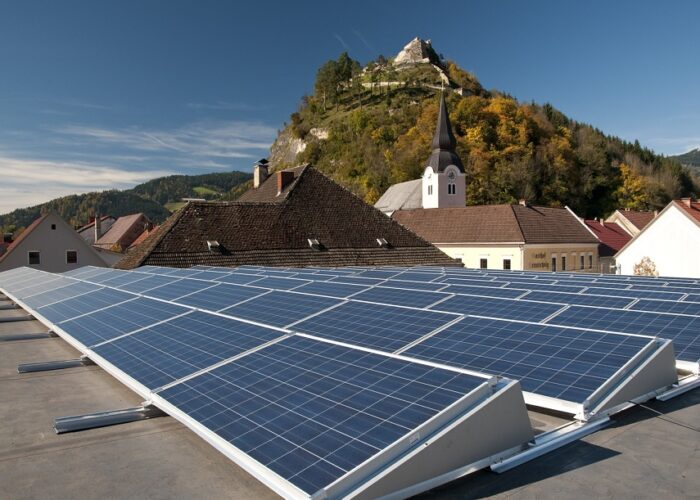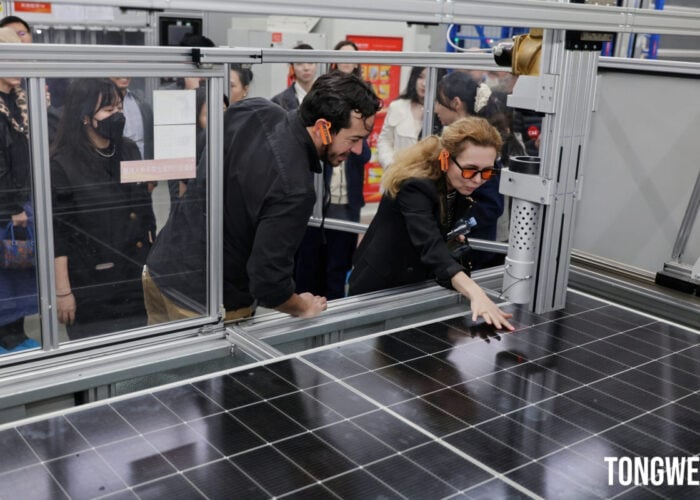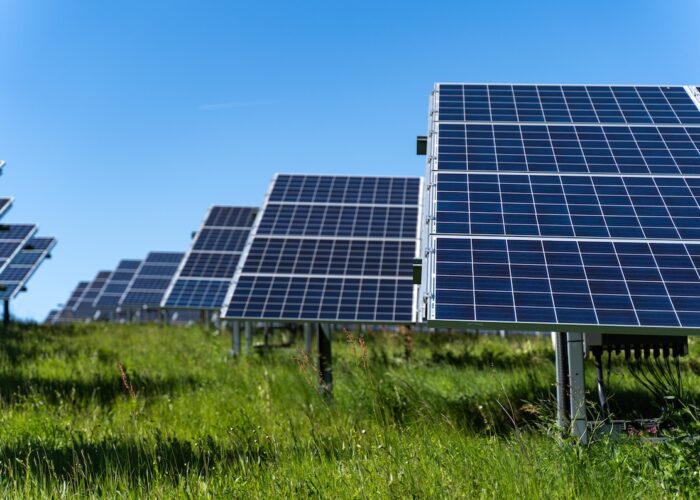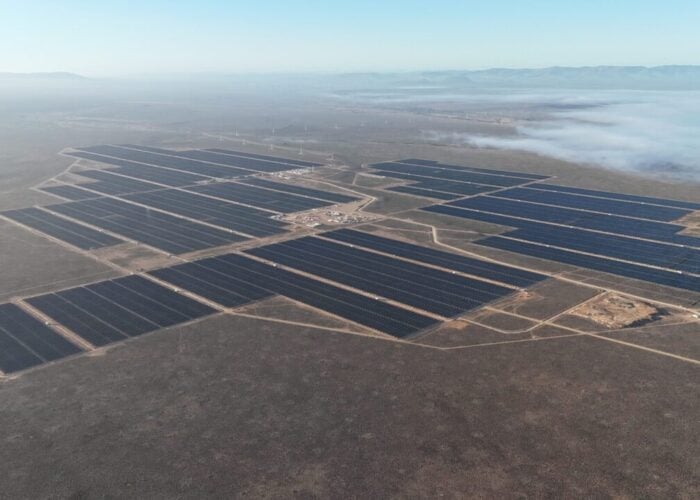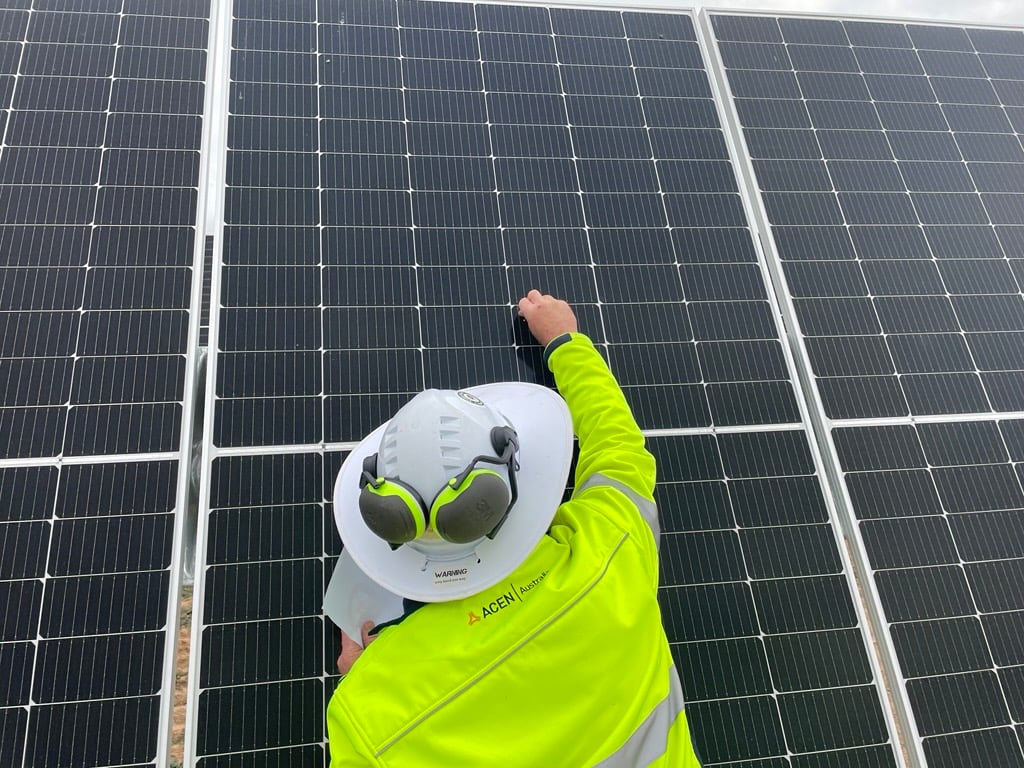
Acen Australia has committed to recycling around one million solar modules from its 400MW Stubbo solar PV power plant in New South Wales.
The Stubbo solar PV plant began generating power this year and is expected to reach full commercial operations by the end of November, having secured a 20-year Long Term Service Agreement (LTESA) in 2021 in the NSW government’s first renewable energy and storage auction.
Try Premium for just $1
- Full premium access for the first month at only $1
- Converts to an annual rate after 30 days unless cancelled
- Cancel anytime during the trial period
Premium Benefits
- Expert industry analysis and interviews
- Digital access to PV Tech Power journal
- Exclusive event discounts
Or get the full Premium subscription right away
Or continue reading this article for free
Acen Australia also claims that the plant has become the first large-scale project to meet independent standards designed to make circular management commercially viable, earning certification from Circular PV Alliance against ‘CPVA Certified’ – the world’s first assurance framework developed specifically for solar circularity.
Acen Australia managing director David Pollington said the CPVA certification reflected a broader commitment to building a transition that endures.
“Decarbonising Australia’s energy system is a crucial step, but if we only replace the fuel, we risk repeating the logic of the old extractive model,” Pollington said.
“Circularity challenges us to design for longevity, resilience and renewal, and Stubbo shows what’s possible when those principles are built in from the start. We hope what we’ve achieved encourages others across the industry to take the same step.”
The recycling commitment reflects broader momentum in Australia’s solar industry toward circular economy principles.
Solar module recycling addresses critical material recovery opportunities, as PV modules contain valuable materials such as silicon, silver, aluminium, and glass that can be recovered and reused in new manufacturing processes.
Solar module recycling in Australia
Given Australia’s strong solar credentials and anticipated growth in the coming years and decades, it is crucial to establish module recycling facilities across the country. This will help maintain a circular economy and safeguard against the shortage of rare materials, such as copper and silver.
The federal government has recognised the need for comprehensive solar waste management, with Australia developing a national solar module reuse and recycling scheme to address growing volumes of PV waste.
The national scheme aims to establish standardised processes for module collection, processing, and material recovery across Australia’s diverse solar markets.
Acen Australia’s one million module commitment provides concrete industry support for emerging recycling infrastructure. The initiative demonstrates how major solar developers can contribute to the development of a circular economy while managing their own asset lifecycle responsibilities.
Regional governments have also started implementing recycling requirements for new solar developments. New South Wales council backing for a module recycling mandate for OX2’s 135MW solar project illustrates how local authorities are incorporating end-of-life planning into development approval processes.
The recycling mandate approach ensures that solar developers account for module disposal costs and environmental impacts from project inception, creating incentives for sustainable lifecycle management.
1.4 million solar modules to reach end-of-life by the end of 2025
Earlier this year, Potentia Energy, a joint venture co-owned by Enel Green Power and INPEX Renewable Energy Australia, announced that approximately 1.4 million solar PV modules will reach the end of their life in 2025 across Australia, underscoring the need for effective recycling initiatives. Potentia Energy is the new name of Enel Green Power Australia, following a rebrand at the end of 2024.
Annual solar module waste volumes in Australia are predicted to nearly double over the next five years, increasing from 59,340 tonnes in 2025 to 91,165 tonnes by 2030. The most significant rise in waste is expected to occur in metropolitan areas due to domestic use.
Additionally, volumes are anticipated to grow in regional areas as large-scale solar facilities begin to contribute to waste starting after 2030.
These issues have been further highlighted by Australian module manufacturer Tindo Solar’s CEO, Richard Petterson, who exclusively told PV Tech Premium last year that if Australia were to install around 1TW of solar modules over a 25-year period, to keep the assets running, the nation would need to recycle around 40GW of modules each year.
Should the country be less ambitious and install 500GW, Petterson added that 20GW of modules will still need recycling each year.
The ongoing issues surrounding solar waste management have also led to several notable deals being signed recently. For instance, Australia-based solar PV recycling company ElecSome has signed partnerships with Potentia Energy and INPEX Renewable Energy Australia, as well as Australian energy major AGL Energy, to tackle solar module recycling.

